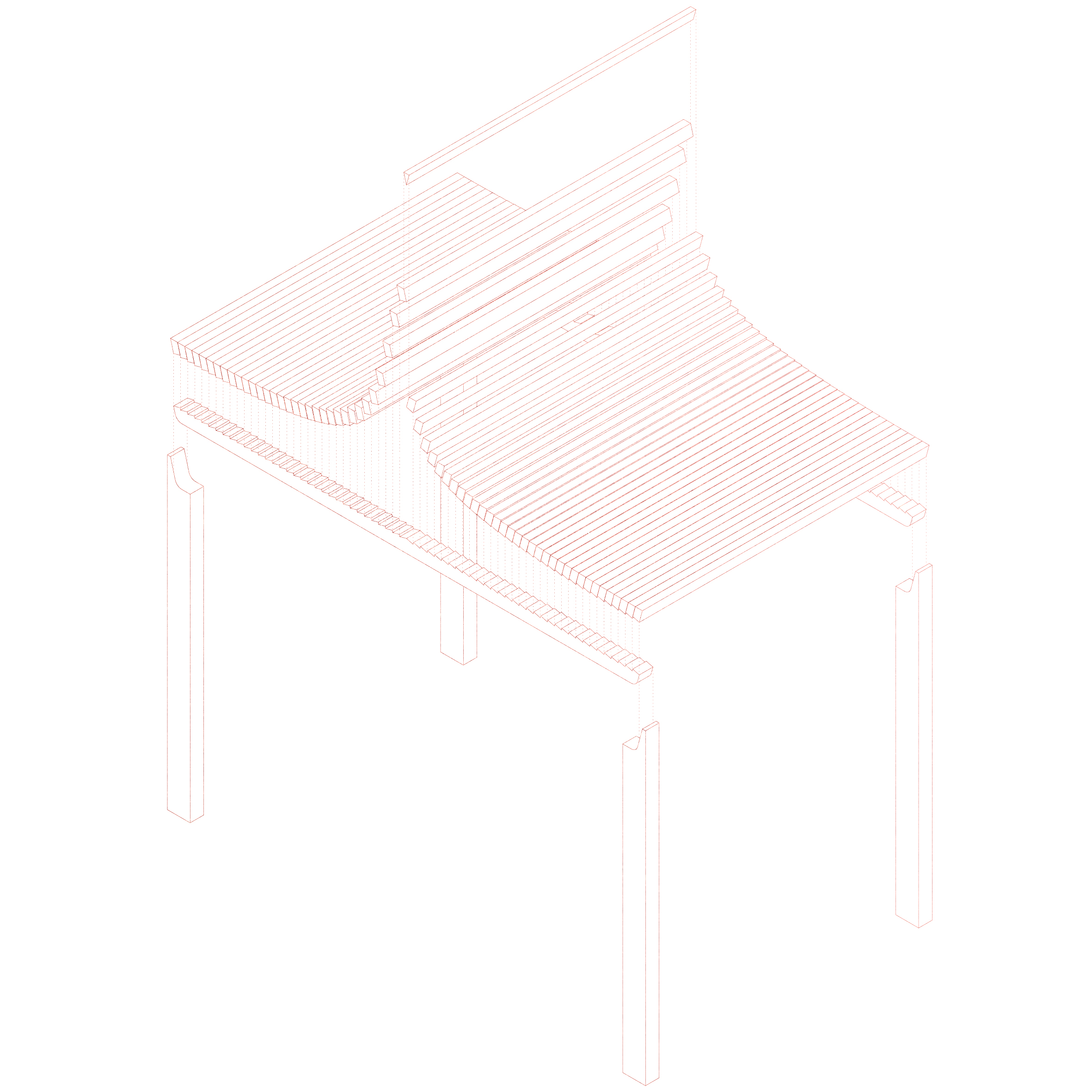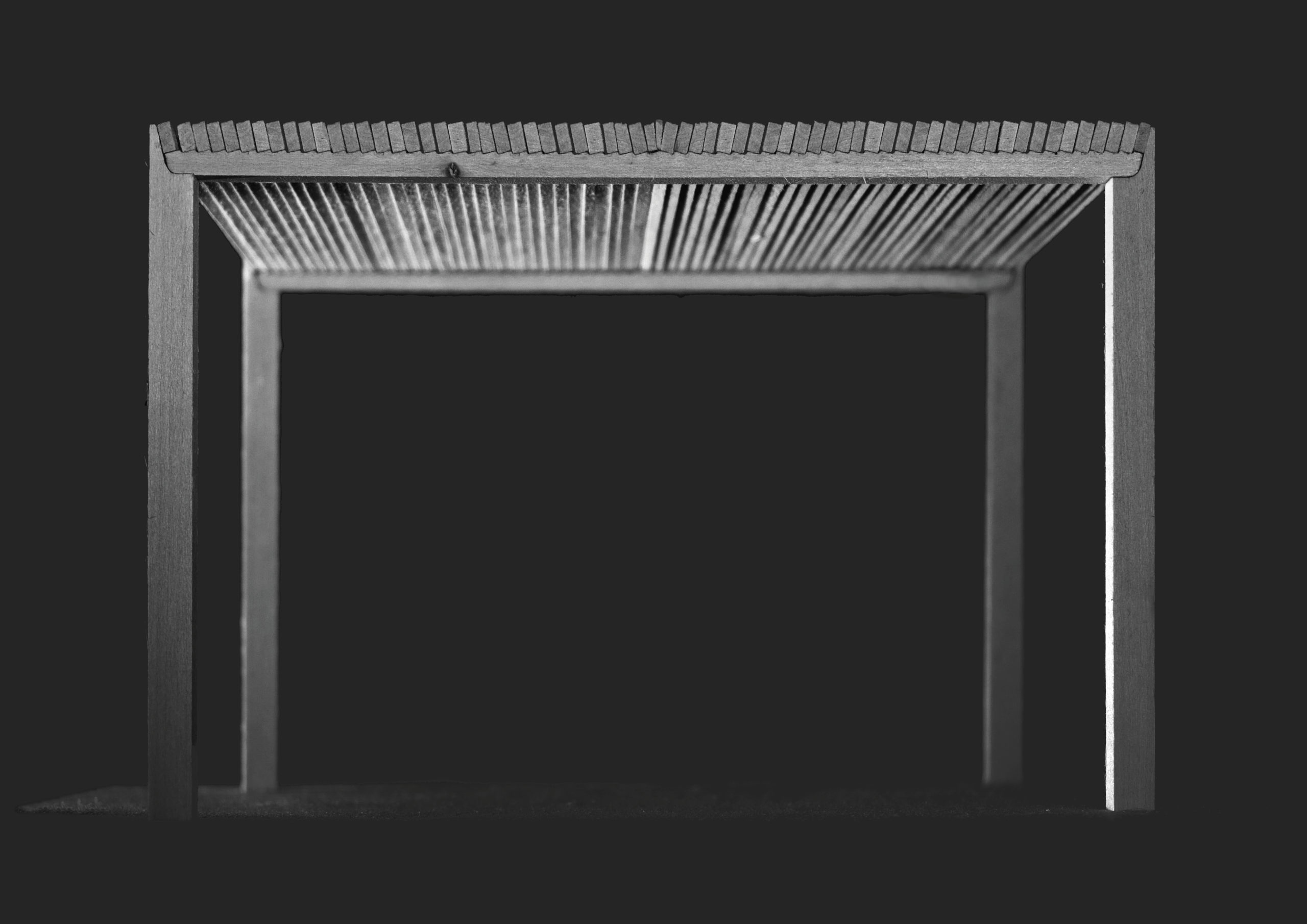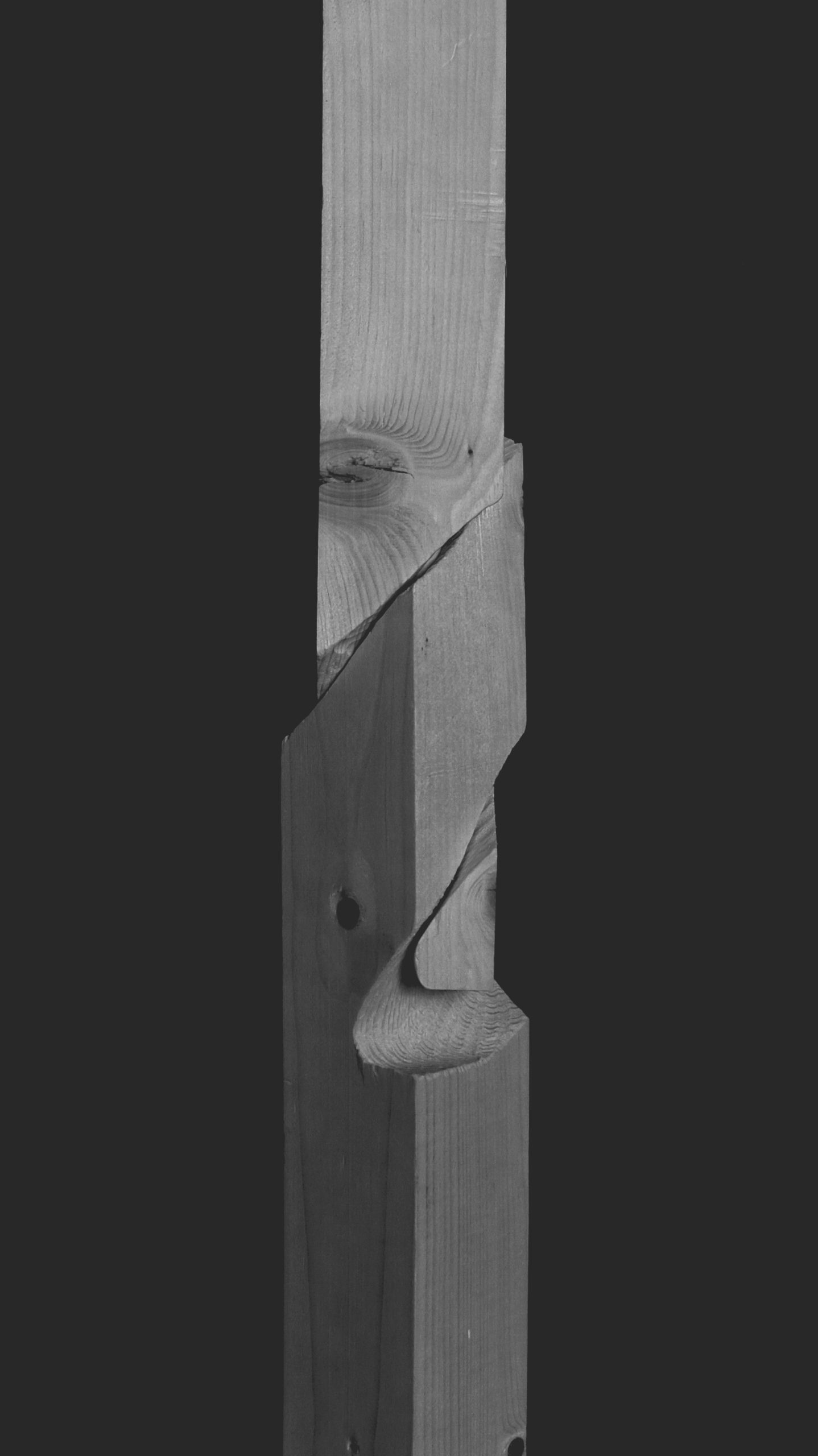
Craftmanship by Machinery
This thesis investigate the possibility of reinterpret vernacular wooden joints, where craftsmanship is replaced with computerized tools, to be used with modern building techniques in an Swedish context.
The industrial revolution changed the role of the craftsmen. The need for handcrafted joinery were no longer needed with the introduction of new materials and fabrication methods. Wood was also replaced as the primal material, for tools and buildings. The old carpender profession, with the deep knowledge of wood and wood joinery was forgotten.
The iron bridge, built 1781 by Abraham Darby the third, marks an interesting turning point. The bridge was built with the new material cast iron but with traditional wooden connections, since Darby did not know how to design in the new material. Much like today, when we use wood at a higher rate again, but as CLT we treat it as a monolithic material to be used with monolithic building systems.
Looking at historical wooden buildings the connections are expressive and a visible part of the whole. The structural logic of the building can be read and the precision of the connections give the buildings structure an ensuring impression. If we were to try to implement the building methods of old in modern building environment computorized tools is the only path. With the help of digital machines the precision required can once again be reached and the forgotten art of joinery can even be developed further.
By looking at history, with the aid of modern digital tools and machines, this thesis hopes to contribute to the reinvention of traditional joints and help shape a new design language more appropriate for the material wood in our current context.
Joints
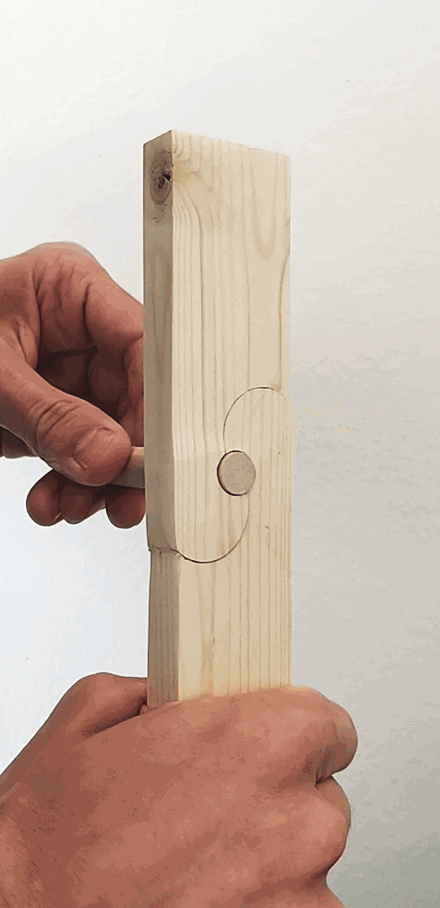

Ying yang joint
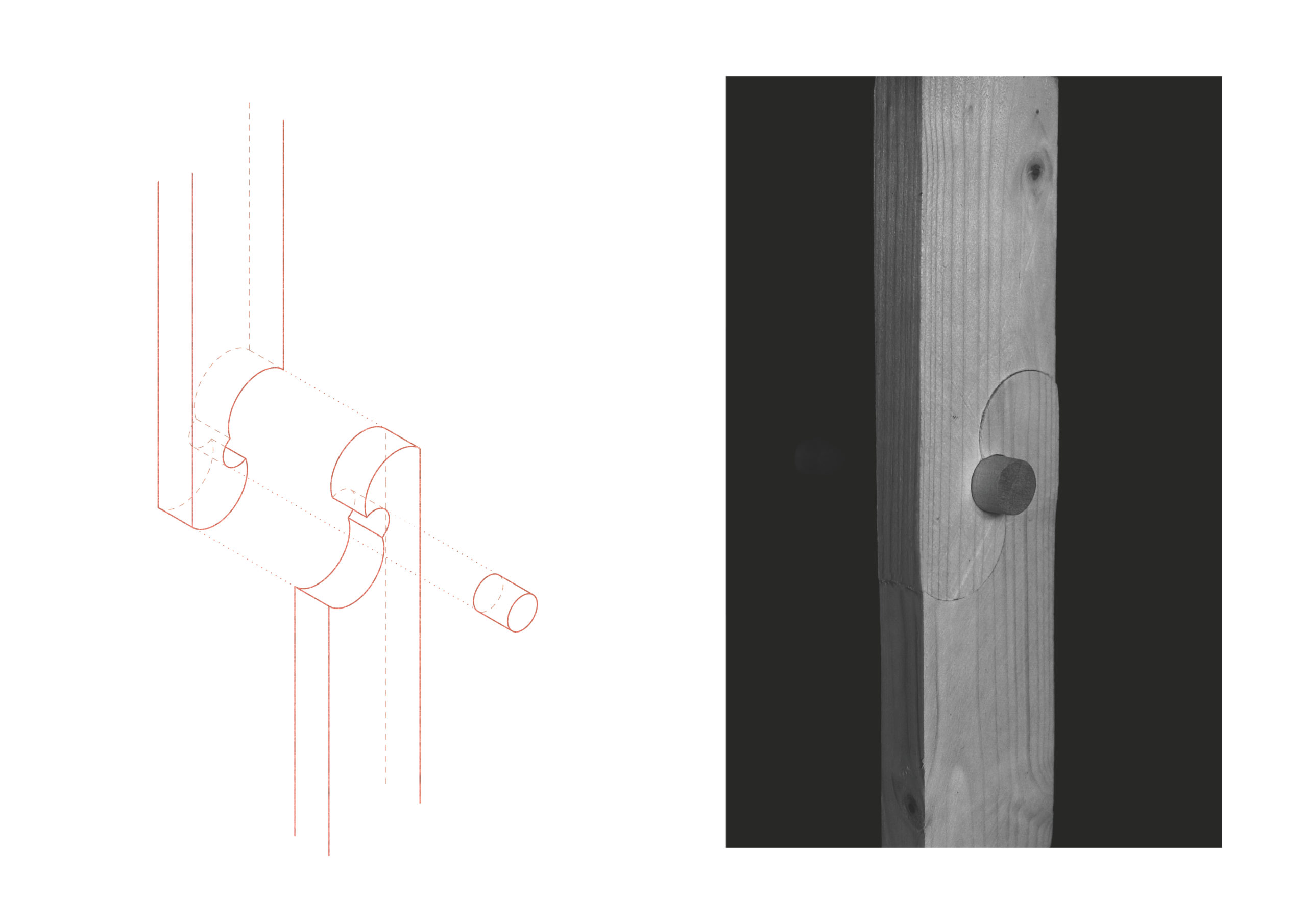
Rotational joint
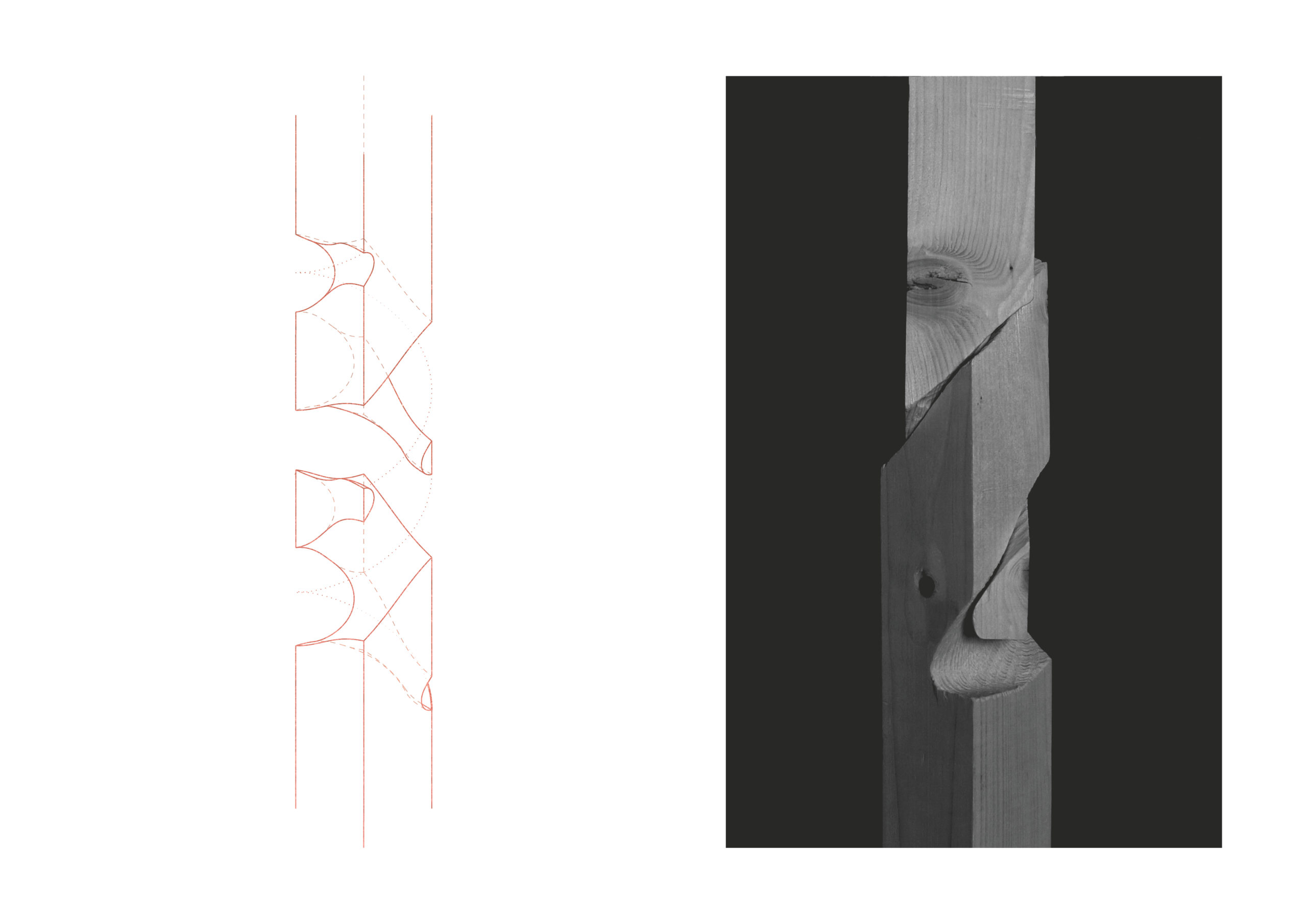
Bended planks joint

Spread joint
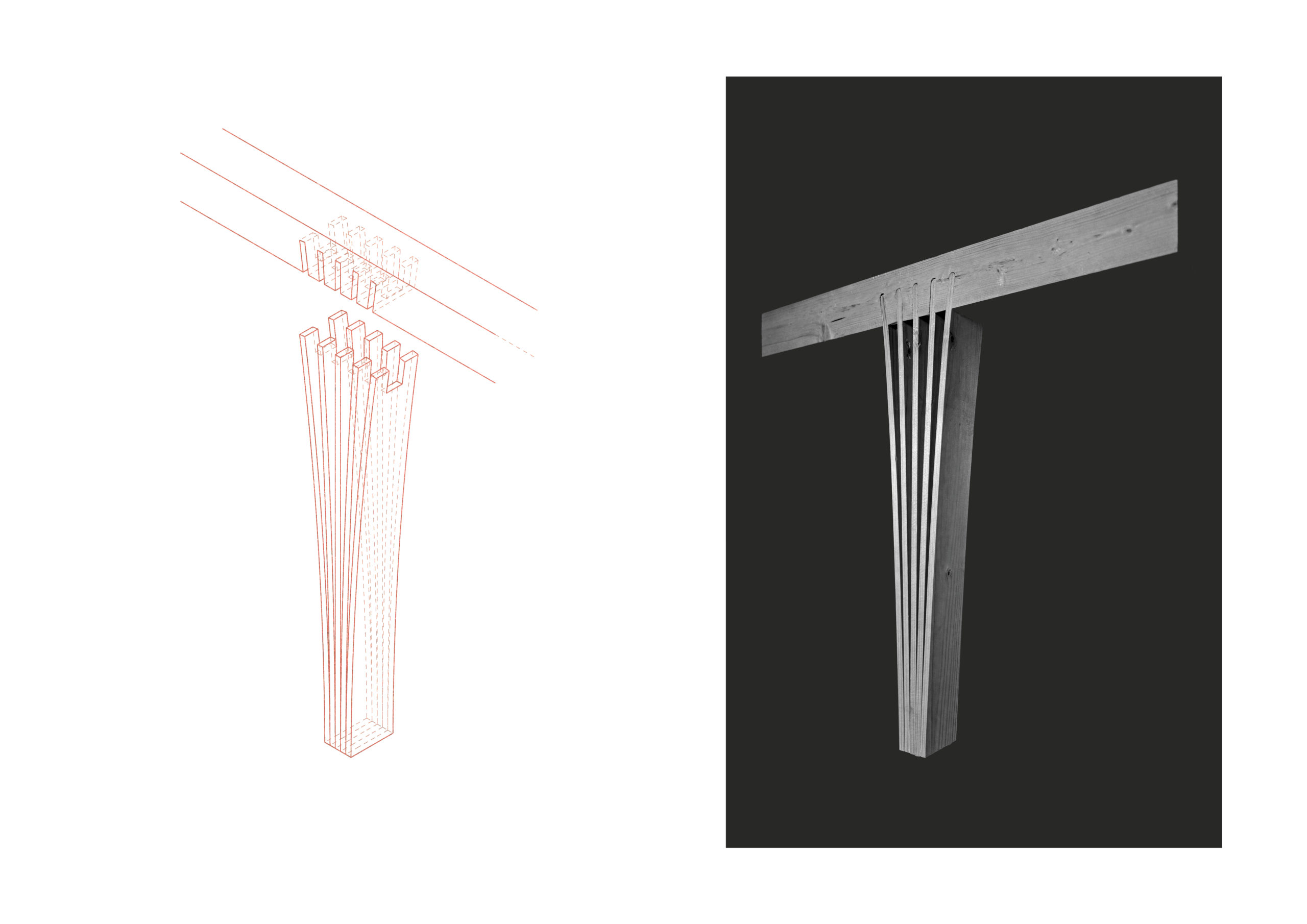
Implementations
Rounded Corners
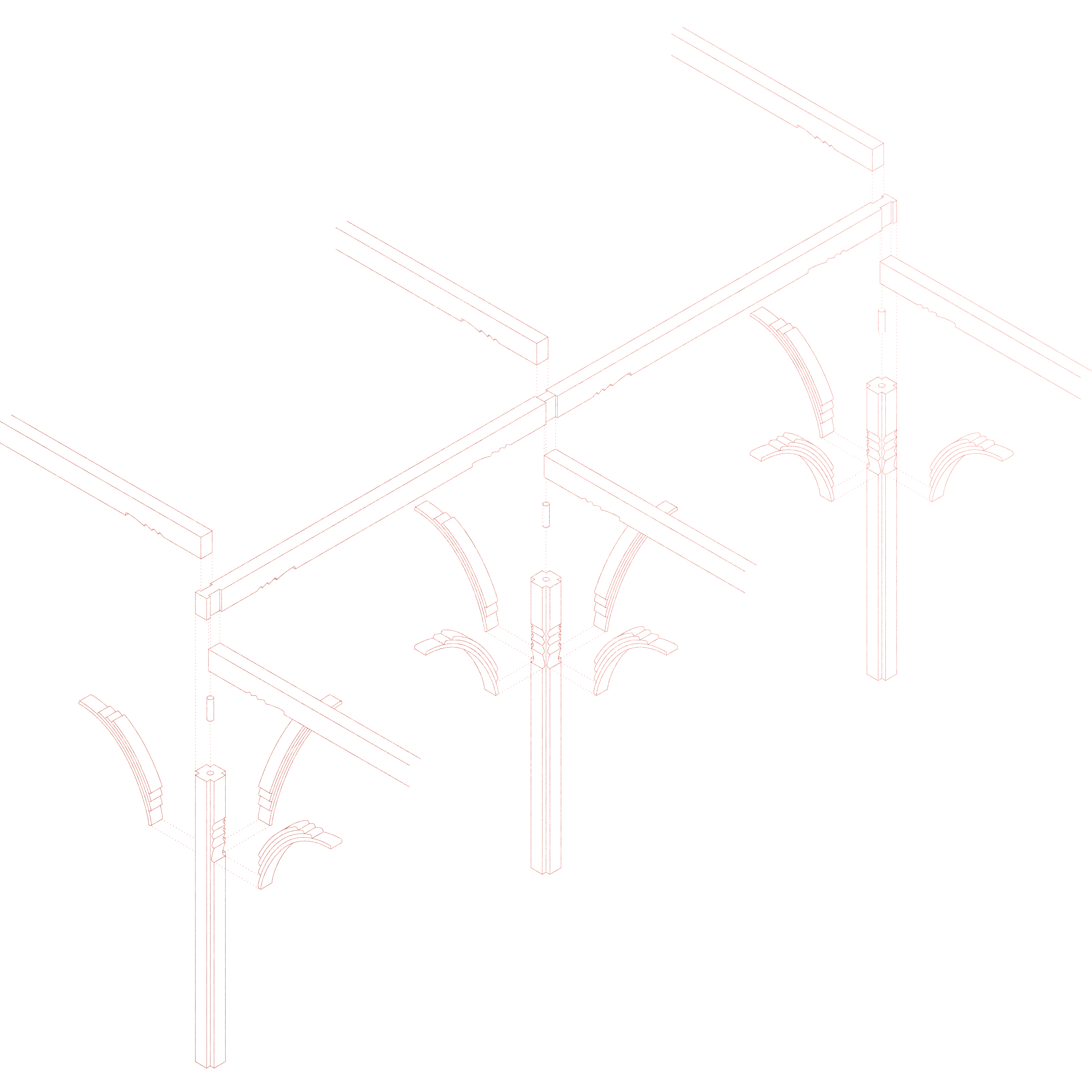
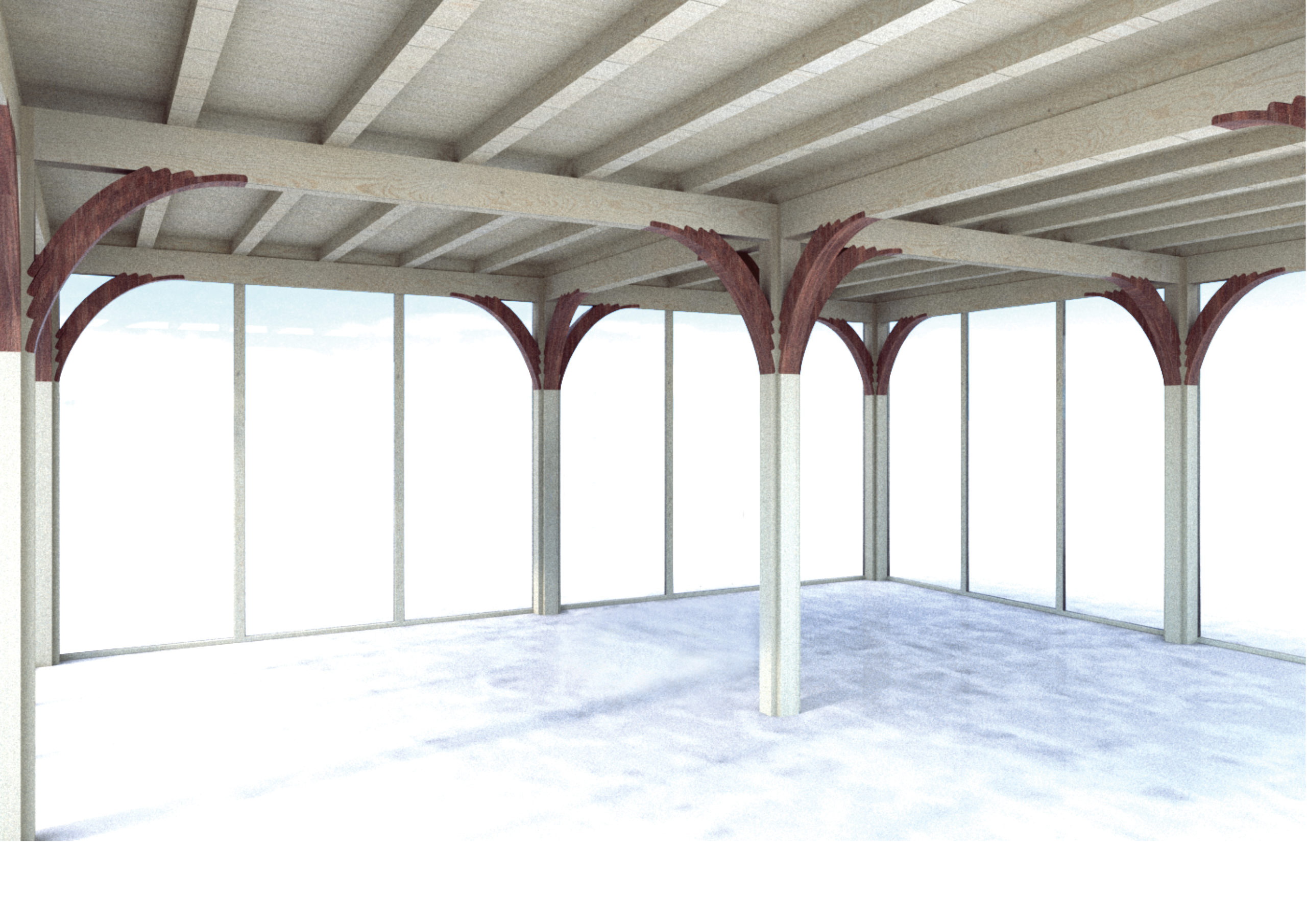
Arch roof
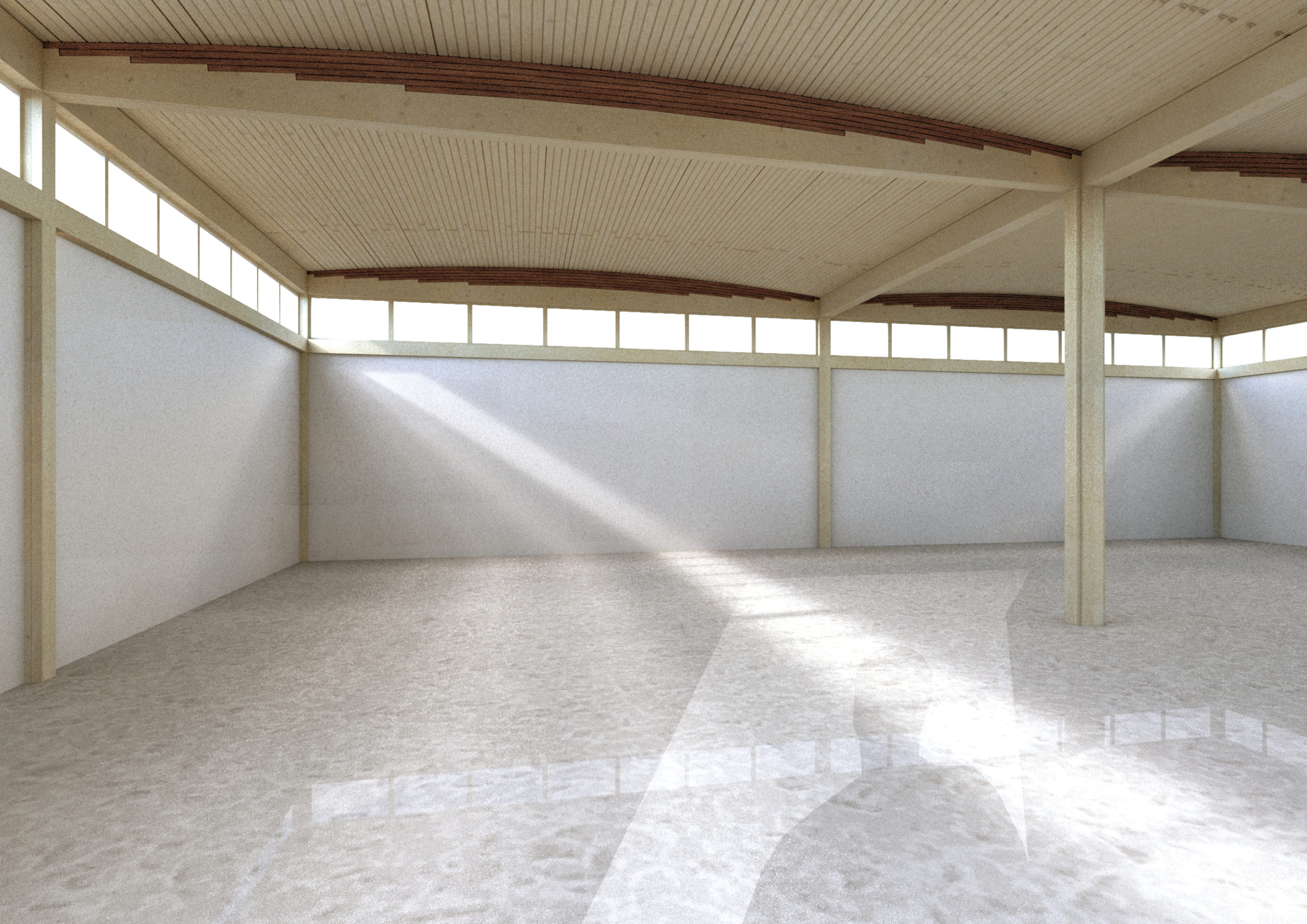
Krusidull Structure
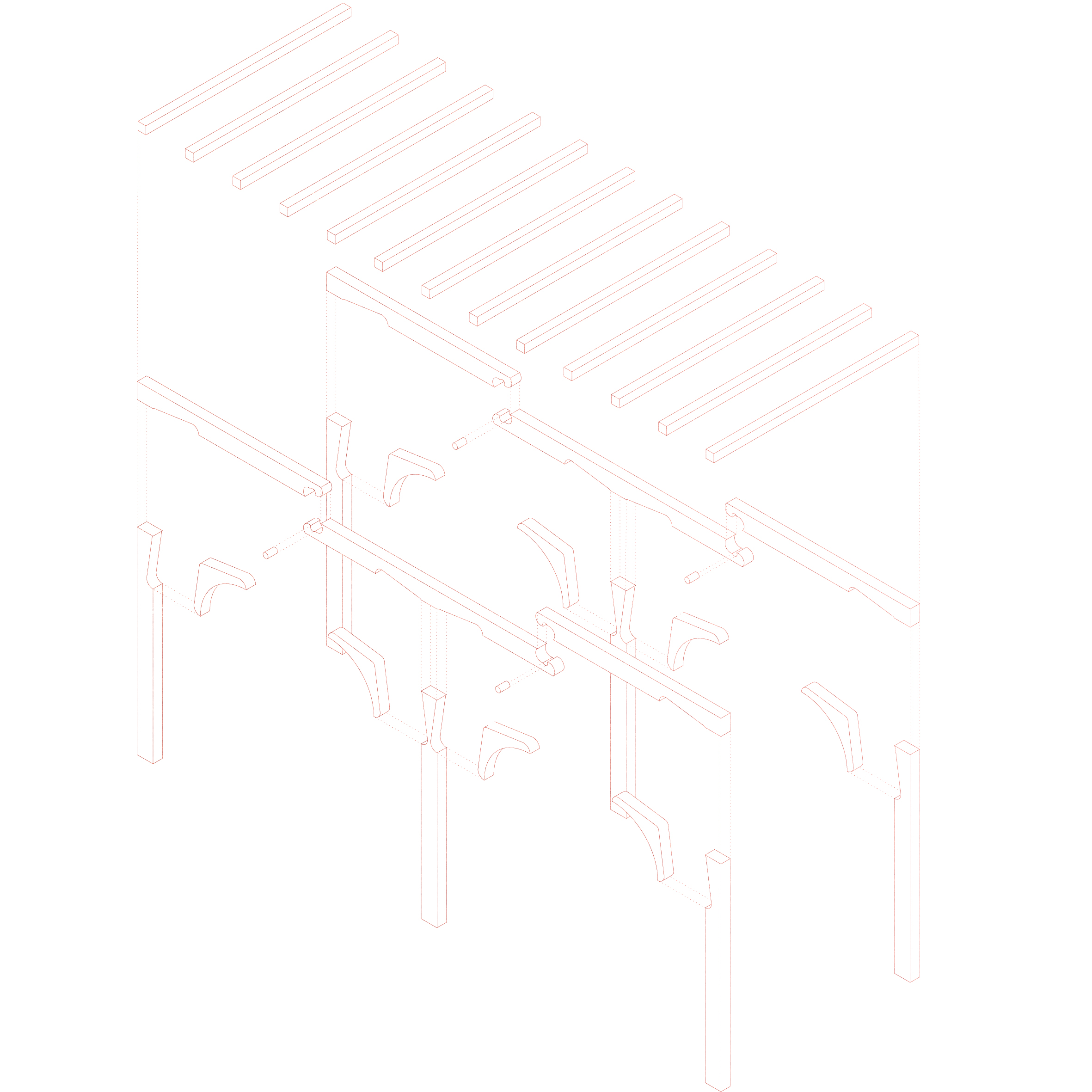
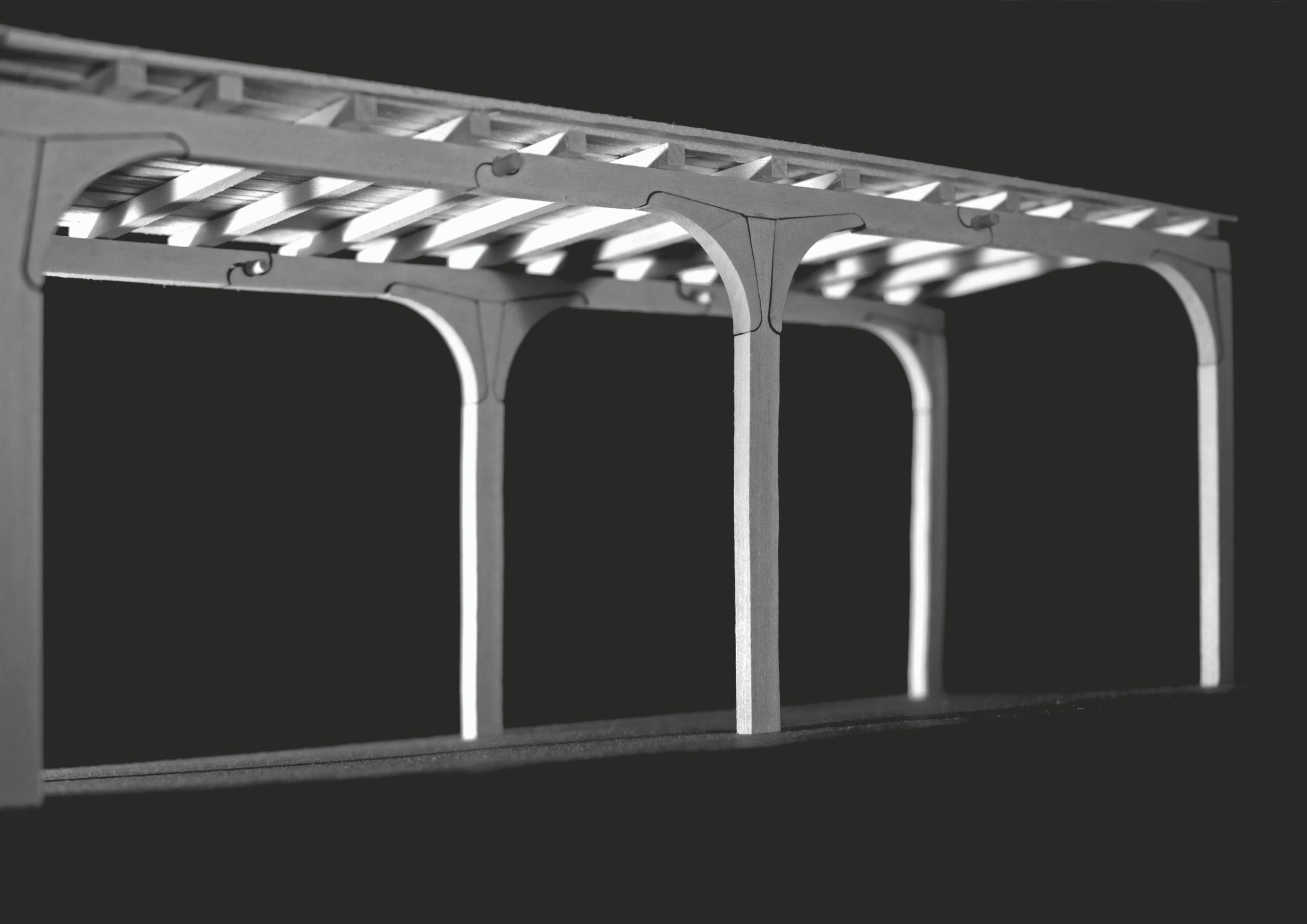
Sawtooth Roof
